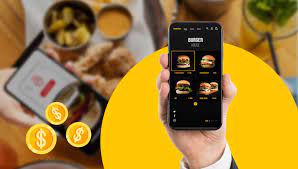Signs You’ve Outgrown Stan Store (and What to Do Next)

The creator economy is flourishing, and more people than ever are building personal brands, selling digital products, and monetizing their expertise. Platforms like Stanstore have made it easier for creators to get started. But at a certain point, many begin to realize that while convenient, Stan Store’s simplicity can also become a limitation. If you’re seeing consistent growth in your audience or business, you may already be feeling the need for something more powerful—something more customizable. Here’s how to know you’ve outgrown Stan Store and why it may be time to explore a more advanced stan store alternative.
Whether you’re a coach, consultant, educator, or digital product seller, your storefront should evolve with your brand. These ten signs will help you assess if you’re at that tipping point—and what to do about it.
1. You Need Advanced Analytics to Understand Performance
Stan Store offers basic sales tracking, but once your business reaches a certain size, you’ll need deeper insights. Questions like:
- Which product converts best by traffic source?
- What’s my customer lifetime value?
- Which traffic channels are most profitable?
Without advanced data, you’re guessing. A growth-ready platform should let you monitor user behavior, A/B test landing pages, and view revenue breakdowns at a granular level.
2. You Want a Personalized Experience for Different Audiences
As your audience grows, you’ll likely segment it. Maybe you’re targeting both beginner and advanced clients or selling different services to creators and business owners.
Stan Store doesn’t support dynamic personalization or funnel segmentation. Tools like Pop Store, on the other hand, allow for custom product visibility, personalized landing pages, and targeted upsells based on user behavior.
3. You’re Offering More Than Just Digital Downloads
If you’re now offering coaching sessions, memberships, or recurring services alongside eBooks and templates, you need more than a basic storefront.
You may want to:
- Schedule 1:1s
- Manage time zones
- Collect intake forms
- Deliver services via Notion, Calendly, or Zoom
Stan Store has limited integrations for such needs, while more robust creator platforms allow seamless service delivery in one streamlined backend.
4. You Want Full Brand Customization and a Unique URL
One of the biggest limitations of Stan Store is its restrictive customization. All users are confined to similar-looking templates with limited layout options. If you’re building a premium brand, this is a problem.
With a serious creator business, branding matters. From your color palette to page structure, testimonials to embedded media—everything should reflect your identity.
Platforms designed for scale often offer custom domain support, CSS styling, and drag-and-drop builders, letting your store feel like an extension of your brand, not just a hosted page.
5. You Need Better SEO and Blog Integration
SEO is still one of the most cost-effective ways to generate organic leads, but Stan Store doesn’t support long-form blog content, keyword metadata, or proper URL structures.
If you’re producing content—whether it’s articles, tutorials, case studies, or reviews—you’re missing out on serious traffic and conversion opportunities without an integrated blog engine.
This is where tools like Webflow, Ghost, or creator-focused platforms like Pop Store shine.
6. You’re Managing Multiple Offers or Funnels
If you only sell one product, Stan Store works fine. But if you’re managing a suite of offers—like a freebie, a tripwire, a mid-ticket product, and a coaching program—things get messy.
Creators ready to scale need:
- Product hierarchies
- Funnel sequencing
- Cross-sells and upsells
- Conditional logic
Stan Store isn’t built for this kind of complexity. A robust backend is crucial for stacking revenue without confusing your audience.
7. Your Email Marketing Strategy Is Becoming More Sophisticated
Email isn’t dead—in fact, it’s where real monetization often happens. But Stan Store doesn’t offer native email marketing or complex automation.
If you’re looking to segment lists, trigger automations, or integrate with platforms like ConvertKit, ActiveCampaign, or Mailchimp, you need a tool that syncs smoothly.
Email marketing should be tied directly to purchase behavior, not just list collection. More advanced platforms let you do exactly that.
8. You’re Running Paid Ads and Need Better Conversion Control
Running ads means every click counts. But a one-size-fits-all checkout page isn’t always optimized for ad traffic. You’ll want to:
- A/B test different versions
- Optimize for mobile traffic
- Customize landing pages by campaign
- Use UTM parameters and track attribution
Stan Store’s limited layout customization restricts you from creating high-converting campaign-specific funnels. If your business depends on scaling with paid ads, this is a major blocker.
9. You Need Integration With Tools You Actually Use
Stan Store doesn’t integrate deeply with most third-party tools. As your business grows, your stack expands: think Stripe, Zapier, Airtable, Notion, Slack, and more.
Integrations shouldn’t just “connect”—they should work seamlessly. You want automations like:
- Sending a client welcome email after purchase
- Updating a CRM or spreadsheet
- Creating a Notion task
- Sending SMS follow-ups
With limited Zapier or API support, Stan Store falls short for serious workflows.
10. You’re Thinking Long-Term, Not Just About Selling Today
This is perhaps the most important sign of all. If you’re building a creator business, not just a digital product, you need infrastructure that supports long-term growth.
This includes:
- Scalable hosting
- Data ownership
- Advanced customization
- Affiliate systems
- Team collaboration features
- CRM-style tracking
Stan Store is a solid starting point, but if you’re building a six or seven-figure creator brand, you’ve already outgrown it.
Final Thoughts: Choose a Platform That Grows With You
The right tool should grow with your vision—not hold it back. If you’re currently using Stan Store and find yourself limited by the lack of analytics, personalization, integrations, or branding control, it may be time to reevaluate your stack.
Many creators are turning to Pop Store, a stan store alternative that offers robust features like dynamic product displays, integrated service delivery, mobile-first design, custom domain support, and deeper analytics. It’s built for the modern creator who’s not just selling products but running a business.
You’ve put in the work to build your audience. Don’t let your platform be the bottleneck. The next step in your journey isn’t just about selling—it’s about scaling with intention, automation, and brand authority.



